
How To Work with Common Law
by Christopher Enright
This book commences by making some general points about common law. It then outlines three important aspects of common law rules, which it expands in the next three chapters.
A common law rule consists of the elements and consequences of the rule joined by a conditional statement. These constitute the ratio decidendi of the case that first created the rule. There is also discussion of how to view precedent as being based on policy.
A way to appraise the value of a rule is to determine its net benefit. In principle this is simple – add up the benefits, add up the costs then subtract total costs from total benefits. In practice it is usually not simple because there is no common scale that will measure all of the items that make up the benefits and the costs.
A common law rule has authority because of the doctrine of stare decisis (to stand by what has been decided). This gives the case authority:
- It makes the ratio of the case binding on later courts beneath it in the hierarchy.
- It makes the ratio of the case presumptively binding on the court itself – the court can depart from the decision if there is good reason to do so.
- Courts in the same jurisdiction that are not bound by the case will still pay heed to the decision.
Once the original court has made a common law rule, later courts may remake it in various ways. The starting point may be some appraisal of the rule that some standardised case annotations seek to capture. If the court takes action it may interpret the rule, modify the rule or abolish the rule.
- The final chapter considers some major characteristics of common law that the book has not covered so far. These are as follows:
- There is the relationship of common law to statute law.
- a description of how to work with common law
- There is the problem of retrospectivity – when a court first makes common law the court may apply it retrospectively to the case before it.
- Since the component of a common law can be scattered through a number of cases the best source for a clear statement of a common law rule may be a textbook on the subject.
- Common law is transnational in scope. It applies in many countries other than the Untied Kingdom because they were once its colonies.
- Because any court dealing with a common law rule may state the rule in the court’s own words the text of the rule is fluid. There is no official statement of the rule as there is with statutes.
120 pages softcover
About the Author
Christopher Enright is a chartered accountant, barrister and solicitor. He has lectured in law at several universities. He specialises in legal method.

This book describes a structured approach to legal research consisting of 12 steps. The idea is to present a step by step approach to legal research that is as foolproof as human endeavour can make it.
Vast numbers of statutes rule our lives. Many of them are not easy to read. Parts of some are almost impossible to read. This book sets out some ways of drafting statutes that makes them easier to read.
This book starts from the ground up to explain the logical structure and function of a privative clause. It then considers in a critical way the reasoning of the High Court. It points out aspects that need further attention because the court’s reasoning is unsatisfactory. It also points out relevant legal considerations that the court has so far overlooked.
The skill of interpreting a statute is important for one good reason – the outcome of a case commonly enough depends on how a court interprets an ambiguous provision in a statute. Yet despite the importance of interpreting statutes there have been no serious attempts so far to describe an effective method for performing the task.
Lawyers tend to be skills averse. They absorb some way of performing various tasks with law but without explicit or proper instruction. This lessens their ability to learn law as students and to work with law as legal practitioners. This book aims to rectify this problem.
Complaints about legal writing, like billable hours, just keep mounting. This book seeks to solve the problem of lack of understanding by a two-stranded approach.
Little attention is paid in law schools to the reasoning processes for proving facts. This book seeks to rectify this problem. It contains a four-step model for proving facts.
There are numerous sources of law in Australia, which possesses sixteen legal systems, being the Commomwealth, six states and nine territories. The purpose of this book is to explain the nature of the sources of law used in these legal systems.
This book explains the task necessary for trial advocacy for a case based on a dispute of facts.
The primary purpose of this book is to provide law students with the text of constitutional legislation and documents. Law students need these in several types of courses. The obvious courses are introductory law courses as well as public law courses on constitutional law, administrative law and human rights.
The aim of this book is to provide an array of exercises that assist students in understanding the Constitution of the Commonwealth of Australia.
The purpose of this book is to state the major principles of constitutional law in a simple and straightforward manner. It is designed as a first reader in the subject prior to attacking the intricacies of federal constitutional law later in a law course.
This book explains how to answers a problem question. It does this by providing a model. Naturally this model incorporates advice on how to perform the four fundamental skills that are needed to answer a problem question.
This book explains an effective method for interpreting the object and meaning of statutes of law.
This book explains an effective method for efficiently organising the elements of law and litigation, and describes how these are related to the facts and consequences of a case.
Legal education pays little attention to ambiguity. This leads to neglect of two important aspects of ambiguity.
Proving facts in court is an uncertain business. This book describes a model for proof of facts to throw some light on the subject and to make the task more systematic.
This book covers the essentials of clear writing techniques and teaches skills on how to plan for and perform well in examinations.
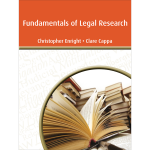 Fundamentals of Legal Research
Fundamentals of Legal Research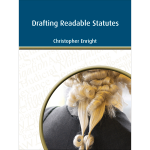 Drafting Readable Statutes
Drafting Readable Statutes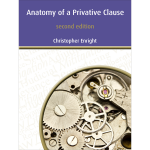 Anatomy of a Privative Clause (2nd Edition)
Anatomy of a Privative Clause (2nd Edition)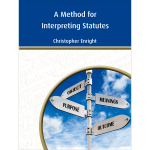 A Method for Interpreting Statutes
A Method for Interpreting Statutes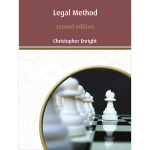 Legal Method (2nd Edition)
Legal Method (2nd Edition)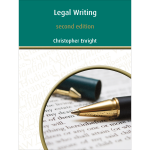 Legal Writing (2nd Edition)
Legal Writing (2nd Edition)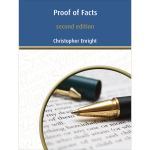 Proof of Facts (2nd Edition)
Proof of Facts (2nd Edition)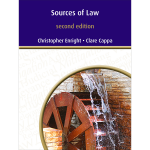 Sources of Law (2nd Edition)
Sources of Law (2nd Edition)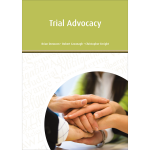 Trial Advocacy
Trial Advocacy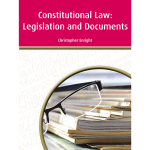 Constitutional Law: Legislation and Documents
Constitutional Law: Legislation and Documents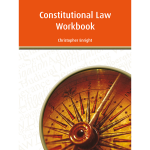 Constitutional Law: Workbook
Constitutional Law: Workbook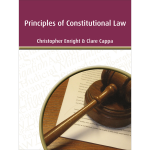 Principles of Constitutional Law
Principles of Constitutional Law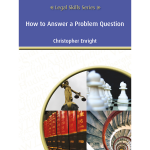 How To Answer a Problem Question
How To Answer a Problem Question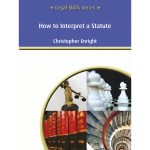 How To Interpret a Statute
How To Interpret a Statute How To Organise Law and Litigation
How To Organise Law and Litigation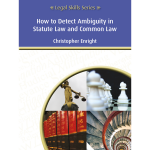 How To Detect Ambiguity in Statute Law and Common Law
How To Detect Ambiguity in Statute Law and Common Law How To Prove Facts
How To Prove Facts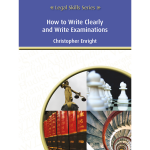 How to Write Clearly and Write Examinations
How to Write Clearly and Write Examinations